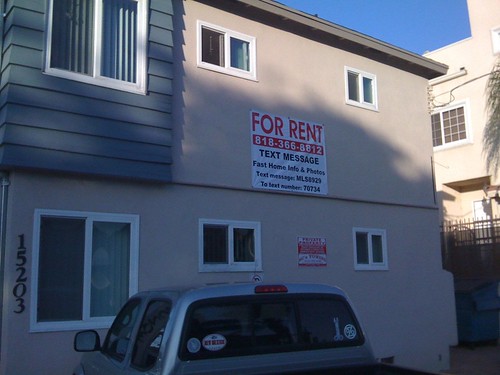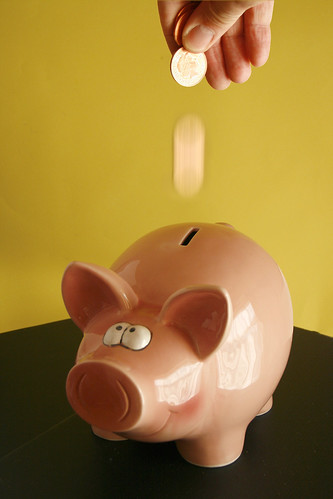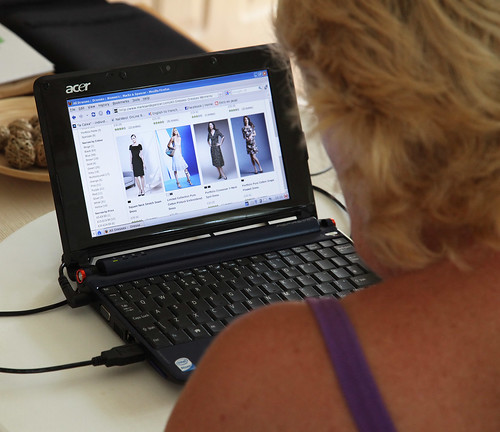In the begining, when Americans were still reeling from the after shock of a freshly burst credit bubble and a crash in the housing market, to mention the term Recession felt almost dirty. Only the brave few dared to mention the “R” word for fear of persecution or being labled as a doomsday party-pooper. Most settled for the more amicable Economic Slowdown.
But as time went on and people got used to the idea, Recession began to frequent headlines and coffee table conversations alike. It became a familiar companion and guide, helping the masses decide what to buy and what to leave out, where to go, and what to pass up on. Then, as the year 2009 was coming to a close, Economic Recovery took center stage. But ER’s fame seems short-lived, it’s spot light dimmed due to the possible immergence of Double-Dip Recession…
Our economy is still lousy: the housing market continues to be weak, unemployment remains high, and now, surprise, surprise, there has been an overall slow down in economic growth.
As economists and governement officials duke it out with the likes of Wallstreet financials and power lobbyists over what to do to spur some economic salvation, a new economic reality seems to be setting in; and all indicators suggest that it will leave an indelible imprint in the collective consumer psyche for years to come.
For the small business owner, accepting this reality and knowing how to adapt to it can make the vital difference between success and failure. In this post I will offer a rundown of the five long-term consumer trends that will continue to shape our economy- trends that small businesses owners cannot afford to ignore- and what all this may mean for the average small business in the US.
1. High unemployment changes the workforce lanscape. According to the U.S. Bureau of Labor Statistics, the rate of unemployment has stalled at 9.5%, with some 14.6 million people seeking jobs, and it doesn’t look like that figure will be coming down any time soon. The fallout? The Wall Street Journal recently reported that more people over the age of 60 are choosing to retire rather than search for scarce jobs. Many out of work are also seeking freelance or independent consultant jobs, others are trying the entrepreneurial route. In
In short, there are three trends that will likely affect small business owners:
- Consumers have less disposable income.
- A large pool of talented freelancers and independent consultants are out there, and using their services is generally more cost effective than bringing these same functions in-house.
- Depending on the nature of your small business, there may be more competition from other new business owners looking to tap into your niche market.
2. It’s becoming more acceptable to rent. There was a time when owning a piece of real estate was part of the American Dream. These days, the housing marketed is limping badly. According to the National Association of Realtors, existing home sales plummeted at staggering 27.2% in July.
Why the sea change? Typical home buyers may lack funds to buy a new house, or they might fear investing in a property now that home prices are poised to fall again. Belying all these figures has also been a growing societal acceptance of a renter’s lifestyle. According to a recent Harvard study, the number of renters has risen by 10% in the past five years.
This trend is heavily affecting several industries including, home buildering, construction and rennovation companies, home refurbishing, home cleaners, and landscapers.
3. Saving is the (new) goal. With their hubrious in check, Americans are curbing their spending. In June, credit card balances fell by 6%, according to the Federal Reserve, while personal savings have tripled in the past three years. Another sign of a thriftier lifestyle: retail e-commerce sales rose slightly in the 2nd quarter of 2010, as cost-conscious consumers seek out the best deals.
While no one would argue that all this saving is detrimental, the fallout has been that there is less cash flowing specifically when it is most needed to grease the wheels of our stalled economy.
4. Risk adverse money manuvering. Weary Americans seem to have lost their appetite for risky ventures. Wanting to avoid repeating the losses they suffered when the market plunged, and not trusting the current economic “stability,” individual investors have pulled out of the stock market in droves, choosing the more staid bond vehicles instead. Additionaly, many consumers as well as small and home-based business owners alike are moving away from banks and seeking do-it-yourself financing alternatives, such as peer-to-peer lending or borrowing against retirement plans.
5. Purchases influenced by the Internet, social networking. In an effort to stretch their dollars, consumers are increasingly scouring the Internet for the lowest prices and the best deals. The U. S. Census Bureau recently reported that U.S. retail e-commerce sales for the second quarter of 2010, was $39.7 billion, an increase of 2.6 percent from the first quarter of 2010.
This trend has been helped by the rise of Internet coupon sites as well as group purchasing sites (where consumers band together to take advantange of a promotional offers by various businesses), such as groupon.com, which have changed the way consumers shop. Social networks are also heavily influencing most consumers’ purchase decisions, according to recent research. Consumers are paying attention to recommendations made by friends or the negative comments made about new products.
Sources:
http://money.cnn.com/2010/08/20/news/economy/New_normal_economy.fortune/index.htm
http://www.nytimes.com/2010/08/22/business/22invest.html?_r=1&hp





